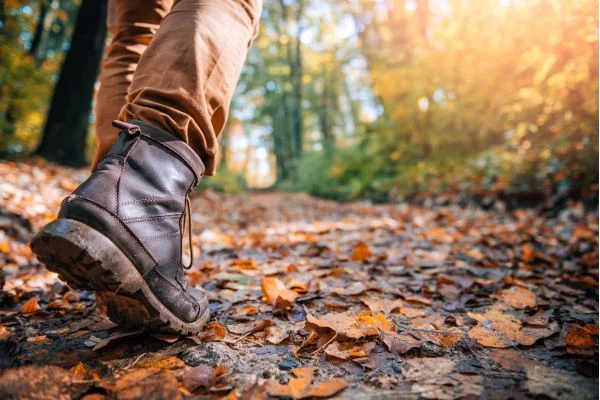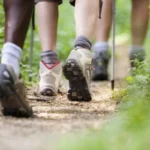For anyone who enjoys outdoor activities, the decision to buy a pair of hiking boots is often one that comes with a lot of questions. Do I Need Hiking Boots? Will they keep your feet comfortable and dry? How do you know which type of boot is right for you? I’ll break down everything you need to know about hiking boots so that you can make an informed decision.
Do I Need Hiking Boots | Let’s Find Out
Hiking boots are a fundamental piece of gear for many outdoor enthusiasts, but determining whether you need them depends on various factors. Let’s explore the considerations to help you decide if hiking boots are necessary for your outdoor adventures.

1. Terrain and Trail Conditions
One of the primary factors to consider when deciding whether you need hiking boots is the terrain and trail conditions you’ll encounter. If you’re hiking on well-maintained trails with even surfaces and minimal obstacles, you may be able to get by with sturdy athletic shoes or trail running shoes.
However, if you’re tackling rugged terrain, rocky trails, or uneven surfaces, hiking boots can provide essential ankle support, stability, and protection from debris.
2. Ankle Support and Stability
Hiking boots are designed to provide superior ankle support and stability, which can be beneficial when navigating challenging terrain or carrying a heavy pack. If you have a history of ankle injuries or prefer the added security of ankle support, investing in hiking boots may be a wise decision. The rigid construction of hiking shoes helps prevent ankle rolls and reduces the risk of injury on uneven surfaces.
3. Protection from Elements
Another advantage of hiking boots is their ability to protect your feet from various elements encountered on the trail.
Waterproof hiking boots with Gore-Tex or other breathable membranes can keep your feet dry and comfortable in wet conditions, such as rain, snow, or stream crossings. Additionally, the durable construction of hiking shoes offers protection from sharp rocks, thorns, and other trail hazards that could cause injury.
4. Durability and Longevity
Hiking boots are typically more durable and long-lasting than regular athletic shoes, thanks to their robust construction and materials. If you plan to hike frequently or tackle challenging terrain, investing in a quality pair of hiking boots can provide better value over time compared to cheaper footwear options. Properly cared for, hiking shoes can withstand years of use and maintain their performance and support.
5. Comfort and Fit
Comfort is paramount when it comes to footwear, especially for long hikes or multi-day backpacking trips. While hiking boots may require a break-in period to conform to your feet, they often provide superior cushioning and support compared to other types of footwear.
Additionally, hiking boots come in a range of styles and fits to accommodate different foot shapes and preferences, ensuring a comfortable fit for extended periods on the trail.
Ultimately, whether you need hiking shoes depends on your individual preferences, hiking style, and the specific conditions you’ll encounter on the trail. While hiking boots offer undeniable benefits in terms of ankle support, stability, and protection, they may not be necessary for every hiking excursion. Consider your needs and priorities carefully to determine if hiking shoes are the right choice for your outdoor adventures.
Types of Hiking Boots
The type of hiking boots you should choose depends on the terrain, weather conditions, and activities you are doing. There are four main types of hiking boots: light hikers, mid-weight hikers, heavy hikers, and mountaineering boots.

Light Hikers – Light hikers are designed for day hikes on well-maintained trails in dry weather conditions. They provide minimal arch support and ankle stability but are lightweight and breathable. These boots are best suited for warm climates or short day hikes in milder temperatures since they offer less insulation than other boots.
Mid-Weight Hikers – Mid-weight hikers provide more protection against moisture and abrasion than light hikers without sacrificing too much comfort or agility. These boots have more cushioning around the ankle area and offer good arch support and excellent traction on uneven terrain. They are ideal for backpacking trips in moderate climates or multi-day hikes in temperate climates.
Heavy Hikers – Heavy hikers are designed for the most rugged trails and challenging weather conditions. They have plenty of cushioning around the ankle area to protect against abrasion from rocks, roots, and other trail hazards and good arch support for long days on your feet. They also feature waterproof materials to dry your feet, even in wet environments or snowshoeing expeditions.
Mountaineering Boots – Mountaineering boots are designed for icy weather conditions and high altitudes where temperatures can drop drastically. These boots have stiffer soles than other hiking shoes, allowing them to easily handle extreme terrains such as icy trails or rocky outcrops. Additionally, these boots offer excellent insulation from the cold and crampon compatibility, so they can be used with ice-climbing tools if necessary.
Also Read: How To Choose Hiking Boots?
The Benefits of Hiking Boots

The most significant benefit of wearing hiking shoes is that they provide reliable ankle support, which can be critical for hikers tackling more challenging terrain.
Hiking boots come with higher ankles and stiffer soles than regular shoes, providing an extra layer of stability and protection against sprains and other injuries from the uneven footing or slippery surfaces.
In addition, many boots come with water-resistant materials and specialized treads that make them better suited for outdoor activities than regular shoes.
Also Read: How Should Hiking Boots Fit?
Hiking Boots vs. Trail Shoes
Choosing the right footwear is crucial for any hiking adventure, and the debate between boots and trail shoes is a common dilemma. Understanding the differences and the specific needs of your hike is essential for making the right choice.
Trail Shoes: Lightweight and Flexible
Trail shoes are ideal for hikers looking for agility and speed on well-maintained trails. Their lightweight design and flexible soles allow for natural movement, making them suitable for fast-paced activities like trail running or day hikes.
Advantages of Trail Shoes
- Agility: Trail shoes offer enhanced agility, allowing hikers to navigate uneven terrain with ease.
- Breathability: Their breathable materials keep feet cool and dry, ideal for warm weather hikes.
- Versatility: Trail shoes transition seamlessly from hiking to other outdoor activities like trail running or light backpacking.
Limitations of Trail Shoes
- Less Ankle Support: Due to their low-cut design, trail shoes provide less ankle support, making them unsuitable for rough or off-trail terrain.
- Limited Protection: They offer less protection against rocks, roots, and debris compared to hiking boots.
Hiking Boots: Stability and Durability
Hiking boots are designed for rugged terrain and long-distance hikes, offering superior stability and durability. Their high-cut design provides excellent ankle support, reducing the risk of sprains and injuries on uneven ground.
Advantages of Hiking Boots
- Ankle Support: Hiking boots provide strong ankle support, crucial for navigating steep slopes and rocky terrain.
- Protection: With reinforced soles and sturdy materials, hiking boots offer superior protection against sharp objects and rough terrain.
- Durability: Built to withstand heavy use, hiking boots are more durable and long-lasting than trail shoes.
Limitations of Hiking Boots
- Weight: Hiking boots are heavier than trail shoes, which can be a drawback for some hikers, especially those focused on speed and agility.
- Less Breathable: Their construction may lead to less breathability, causing feet to sweat and potentially leading to discomfort on hot days.
Also Read: How To Style Your Hiking Boots For Any Adventure?
Conclusion
Now you got the answer to the question: Do I Need Hiking Boots? Determine whether you need a pair of hiking boots depends mainly on where and when you plan to hike as well as what kind of activities you will be doing during your trekking outings – light hikers if it’s just a casual day hike in warm conditions; mid-weight if it’s an overnight outing; heavy if it’s a multi-day trip; mountaineering if it’s going to be extreme temperatures or high altitude climbs!
Ultimately, investing in a quality pair of hiking shoes can make all the difference between an enjoyable experience out on the trails versus being miserable from wet feet or soreness from ill-fitting footwear! So take some time to research various styles before making your purchase! Now get out there—happy trails!



